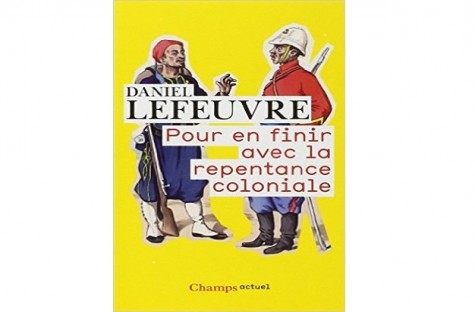
*Scholar in Residence, AVİM
Robert Fisk is relatively well known for his recurrent hostility toward Turkey and the Turkish people, particularly as far as the Armenian issue is involved. He has used, as “evidence” of a “genocidal intent”, the forged “documents” published in 1920 by Aram Andonian,[1] the false “interview” with Atatürk published by The Los Angeles Examiner,[2] and the absurd book written by an Armenian American, Sarkis Torossian, who pretended to be a former officer of the Ottoman, British and French armies.[3]
Albeit plainly wrong and expressed with an offensive wording, the ideological stance of Mr. Fisk is at least coherent, as proves his recent (17 November 2015) article published in The Independent about the deadly terrorist attacks in Paris:
“The French-Algerian identity of one of the attackers demonstrates how France’s savage 1956-62 war in Algeria continues to infect today’s atrocities.”
Nowhere in the article, does Mr. Fisk give any evidence for a connection between the “savage war” of Algeria and the attacks of 13 November 2015. Even worse, Mr. Fisk proves, by this sentence only, his absolute ignorance of the subject: This war began in 1954, not 1956. However, this error makes sense in the fictional world elaborated by Robert Fisk. Indeed, the war was launched by the Front of National Liberation (FLN) by a series of attacks: Out of ten killed persons, only two were armed soldiers; two were soldiers without weapons, two were Muslim civilians who sided with the French, and four were non-Muslim civilians, including a school teacher. His wife was seriously wounded but survived.
It is only fair to notice that, after these assassinations and until August 1955, the FLN almost stopped attacking civilians. However, this group received, during the first months, a very limited support from the Muslim population and failed to recruit an impressive number of members. As a result, Youcef Zighoud, a regional commander of the FLN—precisely the one in charge of the only region, around Constantine, where the FLN had obtained some successes—decided to involve this population in the nationalist fight by inciting reprisals against her. He launched an insurrection which specifically targeted non-Muslim civilians. 119 of them were assassinated, as well as 41 pro-French Muslim civilians. At least 47 policemen and soldiers were killed during the clashes. At Philippeville, a part of the insurgents were drugged, not unlike Daesh (ISIS) terrorists today. In the mixed village of El Alia, out of 36 European civilians killed, 14 were children or teenagers. Indeed, the children were particularly targeted to scare the mothers, who were supposed to ask the husbands to leave Algeria. The insurgency was crushed mercilessly, and hundreds of FLN members were shot, but the bloodiest consequence was the decision, by a part of the European civilians, to “take justice themselves” by killing Muslims indiscriminately; several thousands died.[4] Regional leaders of the Algerian separatist movement had previously used a rather similar strategy of provocation in May 1945.[5]
“Whenever the West is attacked and our innocents are killed, we usually wipe the memory bank. Thus, when reporters told us that the 129 dead in Paris represented the worst atrocity in France since the Second World War, they failed to mention the 1961 Paris massacre of up to 200 Algerians participating in an illegal march against France’s savage colonial war in Algeria. Most were murdered by the French police, many were tortured in the Palais des Sports and their bodies thrown into the Seine. The French only admit 40 dead.”
These lines also reveal the deep ignorance and prejudices of their author. To start with the beginning, the demonstration of 17 October 1961 was not “against France’s savage colonial war in Algeria.” There were two reasons:
1) Officially, it was against the curfew imposed by the Parisian police to Algerians. Each reader will make his own opinion about this measure, but this is impossible to call it a petty measure of racism. It had a strong security rationale. Indeed, from 1958 to 1961, the FLN had killed 47 policemen and wounded 140 others (in attempts of assassination), including 22 killed and 74 wounded from 1 January to 16 October 1961 only. The month of August was the most bloody: Ten policemen were assassinated. This intensification of murders during the year 1961 had no military justification, as the referendum of 4 January 1961, organized by President Charles de Gaulle, gave him a large majority in favor of the self-determination of Algeria.
2) The French branch of the FLN actually used the indignation against the curfew and forced (including by threats of physical violence) Algerian workers to demonstrate on 17 October 1961, in a context of internal rivalry for power in the FLN. As the independence could happen relatively soon, the issue of power was not anymore limited to the party, but was also, and even more about Algeria itself. As a result, to show their importance, the FLN leaders of the Parisian agglomeration decided the demonstration, in spite the risk it represented for the safety of the participants.
Regarding now the number of victims, “up to 200” is a gross exaggeration, totally discredited more than 15 years ago. This figure emerged in 1991, in the book written by Jean-Luc Einaudi,[6] a former admirer of Pol Pot, who had no degree in history or political science, who did not claim to be a historian, and who mixed all the killings of Algerians by the Parisian police during the whole year 1961, the assassinations by the FLN (against moderate separatists of the Algerian National Movement, Algerian workers who refused to give money, or to follow a strict application of Islamic rule, especially as far as alcohol was concerned), and the actual killings related to the demonstration of 17 October. The only serious publications, by a professional historian, based on the archives of the Parisian police gives about 30 demonstrators, at most 50, who were killed.[7] Mr. Fisk, who has never set foot in any archive, dismisses this meticulous work based on primary sources with one sentence: “The French only admit 40 dead,” as if what a French historian could say has no importance, simply because of his nationality. This sentence is reminiscent of the nonsensical defense, by the same Robert Fisk, of the “authenticity” of an “interview” attributed by The Los Angeles Examiner. He dismissed the comprehensive demonstration of Türkkaya Ataöv by saying, with a highly contemptuous tone: “The Turks say it is fake.”[8]
“The police officer in charge was Maurice Papon, who worked for Petain’s collaborationist Vichy police in the Second World War, deporting more than a thousand Jews to their deaths.”
Once again, Robert Fisk simply does not know what he is talking about. Maurice Papon (1910-2007) was never a “police officer” in the full sense of the word. From 1930s to the turn of his public career in 1966—when he turned to business and politics—, Maurice Papon was in the prefectural body. During the Second World War, he was the general secretary of the préfecture de Gironde, namely the second man of the governorate of Bordeaux. He had authority on the police forces, including as far as the “Jewish affairs” were involved, but he never tried to become a police officer. He did not work at that time for the police. Actually, it was the opposite: He gave orders to the police. For reasons I shall discuss in the next paragraph, he continued his career after the liberation, and became in 1958 the préfet de police de la Seine. The police of Paris has a unique statute of autonomy, and its chief often comes from the prefectural body, even if, of course, police officers can be appointed at this place.
This is not until 1981 that documents proving his involvement in the deportation of Jews emerged, and helped by effective lawyers, he multiplied the procedural ways to cancel the criminal investigation against him. Eventually, in 1998, he was sentenced to ten years in jail for “complicity of crime against humanity,” but acquitted of the charge “complicity of murder,” the court having judged that the prosecutor had failed to prove his knowledge of the existence of the gas chambers before the liberation of the death camps in 1945.
Moreover, it must be emphasized that Maurice Papon was not the only responsible for the brutality of the repression. For example, because of a failure of the intelligence department of the préfecture de police, Papon was informed about the demonstration only in the morning of 17 October; as a result, the number of policemen, especially the most trained ones, was insufficient, and this is the most dangerous situation. Moreover, the responsibilities of the political hierarchy are clear, but the Minister of Interior Roger Frey (1913-1997) had a quite different behavior than Maurice Papon during the war: He joined the French Free Forces as early as 1940. As a result, linking the repression with the Vichy regime is not very convincing. It makes more sense to put in the more general context of the Algeria war and of the practices of the Gaullist regime during the first years (1958-1965).[9]
“Omar Ismail Mostafai, one of the suicide killers in Paris, was of Algerian origin – and so, too, may be other named suspects. Said and Cherif Kouachi, the brothers who murdered the Charlie Hebdo journalists, were also of Algerian parentage. They came from the five million-plus Algerian community in France, for many of whom the Algerian war never ended, and who live today in the slums of Saint-Denis and other Algerian banlieues of Paris.”
The figure of “five million-plus” is another evidence that Robert Fisk does not apply a basic rule of journalism: checking the facts. According to the National Institute of Statistics and Economical Studies (Insee), there were in France (in 2008) 710,000 Algerian citizens born in Algeria, 430,000 children of immigrants whose both parents were born in Algeria, and 220,000 whose one parents was born in this North African country. As such, in 2008, 1,360,000 persons could be called Algerian or half-Algerian in France, less than one third of Mr. Fisk’s figure.[10]
Numbers are not the only problem of Mr. Fisk. Once again, historical facts are mistreated by him. He does not provide any evidence for his extraordinary allegation: “the Algerian war never ended” for “many” Algerians in France. Actually, this allegation is even in contradiction with the thesis of its own author: Why did so many Algerians come to France, if it was this colonialist hell? The truth is that before, during, and even after the war of 1954-1962, the French government imposed to the company bosses—who preferred the more educated workers from Germany, Spain and Italy—to hire Algerian workers for political reasons. Indeed, the development of medicine and basic sanitary measures in Algeria, a consequence of colonization, led to a quick increase of the population, which was a true burden for the local economy. The only safety valve was emigration. After the independence, France had a much more welcoming policy vis-à-vis Algerian workers than Britain and Belgium for the nationals of their own ex-colonies. Indeed, the Algerian workers enjoyed in France the same rights as the French workers, except the political rights. Furthermore, until 1973, a number of Algerian nationals (decided by Paris in agreement with Algiers) could go to France for work without a visa: there was no limit until 1964, 12,000 Algerian nationals per year from 1964 to 1968, 35,000 in 1969 and 1970, and 25,000 each year from 1971 to 1973. Furthermore, the end of this practice was decided by the Algerian, not the French cabinet.[11]
Beyond his huge errors on the immigration, Robert Fisk implicitly presents the Algeria war as a war against Islam, or at least Arabic interpretation of Islam, in continuity with the colonial system. However, such a thesis has simply nothing to do with reality. The colonial administration, especially in Algeria, was predominately Islamophile, well before the Second World War. The best known example is the unveiling of the Great Mosque of Paris (1926), in one of the most prestigious quarters of the city, the construction of which was entirely paid by the state thanks to a special law. Indeed, the law of 1905 normally forbids any use of public money for the construction of any religious edifice; the Great Mosque of Paris remains the only exception, because of an ad hoc bill. There are other cases, like the French Muslim hospital of Bobigny, close to Paris, established in 1936 and closed down in 1961, or the respect for Muslim diet by the French army for the North African and Senegalese units.[12]
Regarding the Algeria war itself, those who played the religion card were almost only the leaders of the radical, religious wing of the FLN. The FLN conducted a war of extermination against the moderate separatists, who never failed to retaliate with guns when they could (about 4,000 victims on both sides, in France only), as well as against the pro-French elites.[13] Then, the radical wing of the FLN imposed on the rest of the party—who did not wish such extreme measures—a campaign of ethnic cleansing, in 1962-63, against the settlers and the indigenous Jews, namely against more than one million persons, who fled by fear of the assassinations (with gruesome mutilations) and kidnappings.[14] This was the implementation of an idea visible among of the most extreme elements of the Algerian national movement since 1943.[15] At the same time, thousands of ordinary Algerians who had joined the French army for a series of reasons -including the assassinations and massacres by the FLN (but rarely an opposition to the independence of Algeria- were exterminated.
Correspondingly, Mr. Fisk’s claim on “France’s savage colonial war in Algeria” is an over-simplification: The “savage” methods, such as torture, were never generalized, either in the territory of Algeria or France, either in the time of the war or peace.[16] The war was also the climax of the French investments to improve the life of Muslim Algerians, with the openly expressed goal to keep, or regain, their support.[17]
I stop here my refutation of Robert Fisk’s false claims, the examples provided being already more than enough to show to what kind of “journalism” his piece belongs to. To finish, I am going back to his ideological coherence. Mr. Fisk is not simply a person who shows a remarkable aptitude for being fully wrong. His distortions of facts and his inventions are ideologically coherent. Indeed, he is not the first to isolate from their context the war crimes of French officers and civilians in Algeria, and to exaggerate their scope. This misuse of the Algerian tragedy was basically a joint strategy of the FLN and their Soviet masterminds. France was even accused of “genocide.”[18] Yet, the same Soviet Union was behind the emergence of the “Armenian genocide” claims by 1965—a project prepared as early as 1950s.[19] Quite logically, the political branch of the Soviet-supported Armenian Secret Army for the Liberation of Armenia (ASALA) in France advocated bombings against civilians in 1982, and used as an argument the example of the FLN.[20]
Mr. Fisk is not even new in being habitually wrong, but he perpetuates a decade-old, totalitarian tradition of disinformation against both France and Turkey.
[1] In his book The Great War for Civilization (New York: Vintage Books, 2007). On this question: Şinasi Orel and Sürreya Yuca, The Talât Pasha “Telegrams”: Historical fact or Armenian fiction? (Nicosia-Oxford: K. Rüstem & Brothers/Oxford University Press, 1986); Jean-Louis Mattei, Belgelerle Büyük Ermenistan Peşinde Ermeni Komiteleri (Ankara-İstanbul: Bilgi Yayınevi, 2008), pp. 261–284; Maxime Gauin, “Aram Andonian’s‘Memoirs of Naim Bey’and the Contemporary Attempts to Defend their Authenticity’”, Review of Armenian Studies, 2011, No. 23, pp. 233–292; Christopher Walker, “World War I and the Armenian Genocide”, in Richard G. Hovannisian, The Armenian People From Ancient to Modern Time (New York: St Martin’s Press, 1997), p. 247.
[2] For example, during a debate with David Saltzman on Russia Today (March 2010): https://www.youtube.com/watch?v=5xfrb_sCzDs&feature=channel. On this issue: Türkkaya Ataöv, Another Falsification: Statement (1926) Wrongly Attributed to Mustafa Kemal Atatürk (Ankara: Sistem Ofset, 1986), reedited in Armenian Falsifications (New York: Okey, 2008), pp. 55-72, https://derinstrateji.files.wordpress.com/2015/02/armenian-falsifications-ataov.pdf
[3] Robert Fisk, “The Armenian hero Turkey would prefer to forget”, Independent, http://www.independent.co.uk/voices/comment/the-armenian-hero-turkey-would-prefer-to-forget-8612890.html. On this issue: Halil Berktay, “Strateji dehası Torosyan, kara harekâtını bilmiyor,” Taraf, 8 November 2012; Hakan Erdem, Gerçek ile Kurmaca Arasında Torosyan’ın Acayip Hikayesi (İstanbul: Doğan, 2012); Edhem Eldem, “Torosyan Belgeleri ve sonrası,” Toplumsal Tarih, no. 230, February 2013, pp. 38-44; Maxime Gauin, “A True or False Story by Torossian,” Daily Sabah, 2 October 2015, http://www.dailysabah.com/op-ed/2015/10/02/a-true-or-false-story-by-torossian
[4] Roger Vétillard, 20 août 1955 dans le nord-Constantinois. Un tournant dans la guerre d’Algérie ? (Paris : Riveneuve, 2013).
[5] Roger Vétillard, Sétif, Guelma mai 1945 : massacres en Algérie (Paris : Éditions de Paris, 2011).
[6] Jean-Luc Einaudi, La Bataille de Paris (Paris : Le Seuil, 1991).
[7] Jean-Paul Brunet, Police contre FLN (Paris : Flammarion, 1999); by the same author, Charonne. Lumières sur une tragédie (Paris : Flammarion, 2003); and “Police Violence in Paris, October 1961: Historical Sources, Methods and Conclusions,” The Historical Journal, LI-1, March 2008, pp. 195-204; Michel Renard, “Les décès dus à la manifestation du 17 octobre 1961”, Études coloniales, 22 janvier 2012, http://etudescoloniales.canalblog.com/archives/2012/01/22/23307274.html
[8] “Robert Fisk COMPELLED TO LIE (for Armenians)”, YouTube, https://www.youtube.com/watch?v=1y4zAzosoAA
[9] In this regard, see especially Alain Dewerpe, Charonne, 8 février 1962 (Paris : Gallimard, 2006).
[10] “Fiches thématique – Population immigrée”, Insee.fr, http://www.insee.fr/fr/ffc/docs_ffc/ref/IMMFRA12_g_Flot1_pop.pdf
[11] Daniel Lefeuvre, Pour en finir avec la repentance coloniale (Paris : Flammarion, 2008), pp. 165-183 (1st edition, 2006).
[12] Ibid., pp. 185-197; Michel Renard, “Gratitude, contrôle, accompagnement: le traitement du religieux islamique en métropole (1914-1950)”, Bulletin de l’IHTP, no. 83, premier semestre 2004, pp. 54-69, http://www.ihtp.cnrs.fr/spip.php%3Farticle328&lang=fr.html
[13] Laurent Chabrun, La Guerre de l’ombre. RG contre FLN: la guerre d’Algérie en France (Paris : Jacob-Duvernet, 2011).
[14] Jean-Jacques Jordi, Un silence d’État. Les disparus civils européens de la guerre d’Algérie (Paris: SOTECA, 2011); Jean Monneret, La Phase finale de la guerre d’Algérie (Paris : L’Harmattan, 2000).
[15] Lecture of Daniel Lefeuvre, June 2012, https://www.youtube.com/watch?v=Mdn0v0e-v-s
[16] Jean-Charles Jauffret, Ces officiers qui ont dit non à la torture. Algérie 1954-1962 (Paris, Éditions Autrement, 2005); Denis Lefebvre, Guy Mollet face à la torture en Algérie. 1956-1957 (Paris : Bruno Leprince, 2001).
[17] Daniel Lefeuvre, Chère Algérie. La France et sa colonie (1930-1962) (Paris : Flammarion, 2005) (1st edition, 1997).
[18] Jacques Simon, Algérie : l’abandon sans la défaite, 1958-1962 (Paris : L'Harmattan, 2009), p. 234.
[19] Gaïdz Minassian, Guerre et terrorisme arméniens, (Paris: Presses universitaires de France, 2002), pp. 17-31.
[20] “Notre lutte et l’opinion publique”, Hay Baykar, 24 novembre 1982, p. 4.
© 2009-2025 Center for Eurasian Studies (AVİM) All Rights Reserved
-
Owen Bennett - Robert Fisk: COMPELLED TO LIE (for Armenians)
YouTube removed a mentioned a video in Dr. Gauin's excellent article. YouTube is owned by Google, located in California, and that is the state most populated by ethnic Armenians. YouTube has been getting rid of many truthful videos, given their concerns over "hate." Of course, the videos that produce hate are their many videos that validate this "genocide." Robert Fisk: COMPELLED TO LIE (for Armenians) may now be accessible at: https://www.dailymotion.com/video/x7spro6 23.05.2021
-
 ARMENIA, THE 'BRANCH OF RUSSIA' IN THE SOUTH CAUCASUS
ARMENIA, THE 'BRANCH OF RUSSIA' IN THE SOUTH CAUCASUS
Maxime GAUIN 31.08.2015 -
 PATRICK DEVEDJIAN: A NEO-FASCIST WHO WAS A LIFE-LONG SUPPORTER OF TERRORISM
PATRICK DEVEDJIAN: A NEO-FASCIST WHO WAS A LIFE-LONG SUPPORTER OF TERRORISM
Maxime GAUIN 02.04.2020 -
 THE “NEJDEHISM” REMAINS OFFICIAL IN ARMENIA
THE “NEJDEHISM” REMAINS OFFICIAL IN ARMENIA
Maxime GAUIN 30.10.2019 -
 ROBERT FISK, BETWEEN FRANCOPHOBIA AND TURKOPHOBIA
ROBERT FISK, BETWEEN FRANCOPHOBIA AND TURKOPHOBIA
Maxime GAUIN 19.11.2015 -
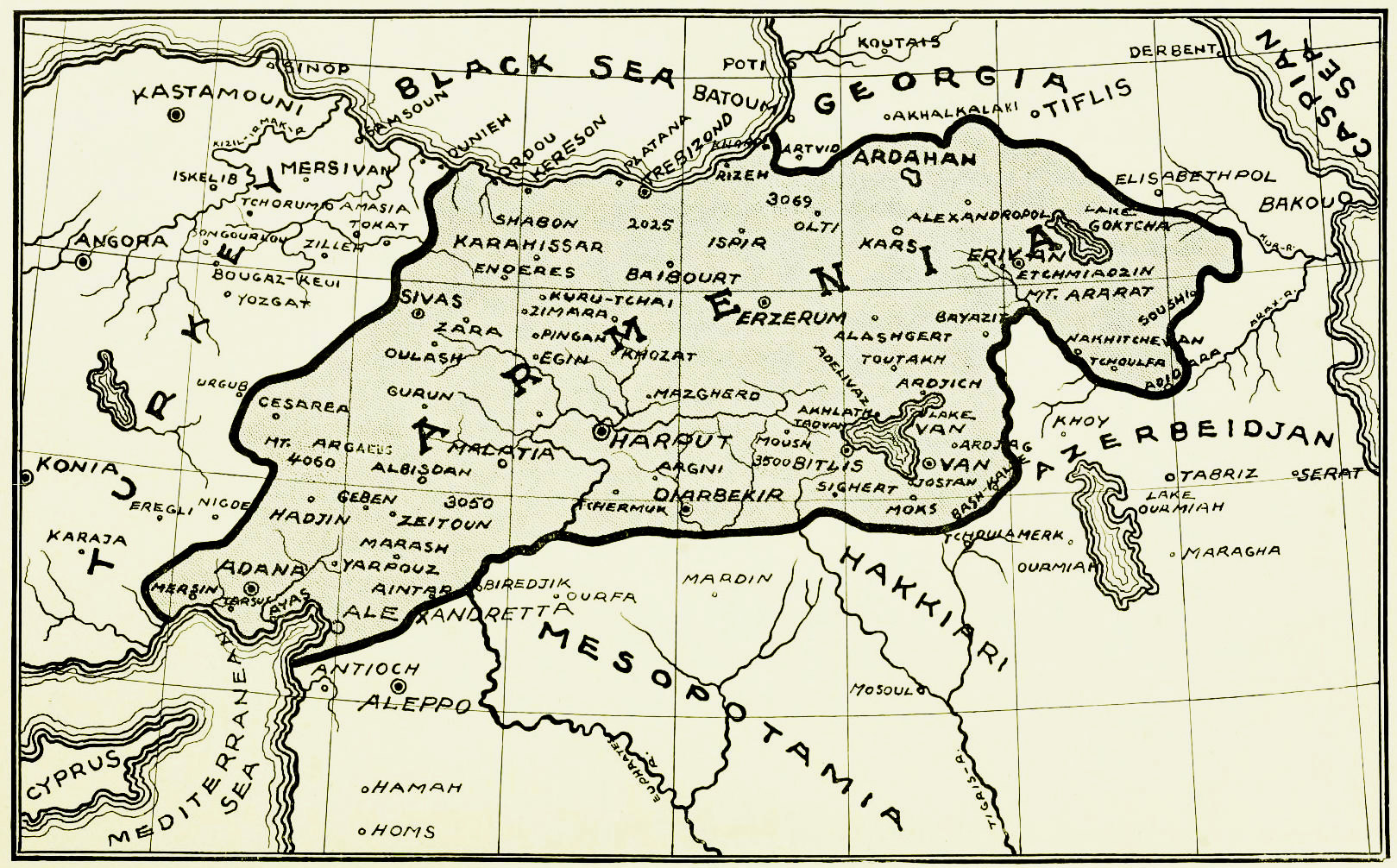 THE COLLAPSE OF DASHNAK ARMENIA IN 1920 AND THE DEBACLE OF NIKOL PASHINYAN’S REGIME IN 2020
THE COLLAPSE OF DASHNAK ARMENIA IN 1920 AND THE DEBACLE OF NIKOL PASHINYAN’S REGIME IN 2020
Maxime GAUIN 30.10.2020
-
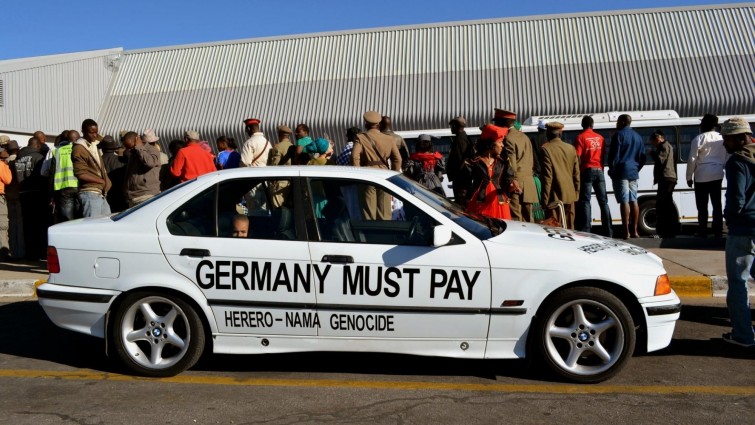 GENOCIDE AND GERMANY – II
GENOCIDE AND GERMANY – II
Mehmet Oğuzhan TULUN 18.10.2017 -
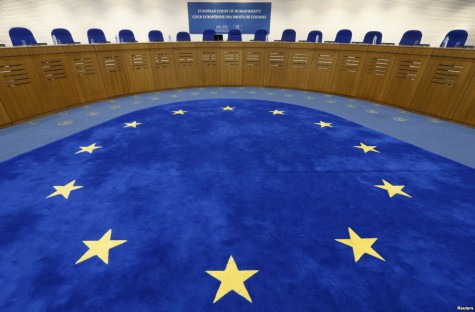 ECHR’S DOĞU PERINÇEK - SWITZERLAND DECISION (UNOFFICIAL ENGLISH)
ECHR’S DOĞU PERINÇEK - SWITZERLAND DECISION (UNOFFICIAL ENGLISH)
Hazel ÇAĞAN ELBİR 03.03.2014 -
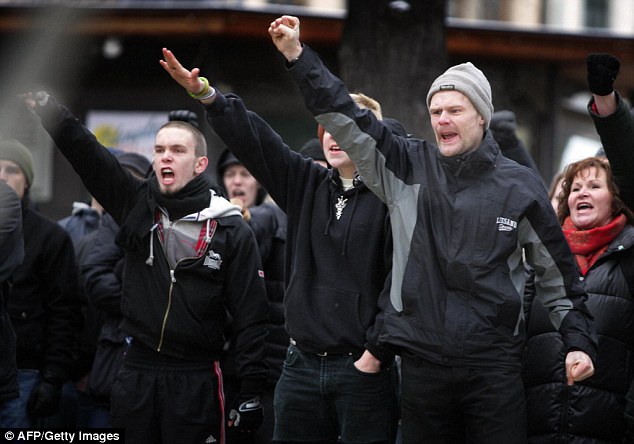 NEO – NAZISM IS GAINING STRENGTH IN THE NORDIC COUNTRIES
NEO – NAZISM IS GAINING STRENGTH IN THE NORDIC COUNTRIES
Hazel ÇAĞAN ELBİR 20.09.2018 -
 THE RISE OF CHRISTIAN NATIONALISM
THE RISE OF CHRISTIAN NATIONALISM
Mehmet Oğuzhan TULUN 02.11.2022 -
 1934 PACT OF BALKAN ENTENTE: THE PRECURSOR OF BALKAN/SOUTHEAST EUROPE COOPERATION
1934 PACT OF BALKAN ENTENTE: THE PRECURSOR OF BALKAN/SOUTHEAST EUROPE COOPERATION
Teoman Ertuğrul TULUN 06.08.2020
-
25.01.2016
THE ARMENIAN QUESTION - BASIC KNOWLEDGE AND DOCUMENTATION -
12.06.2024
THE TRUTH WILL OUT -
27.03.2023
RADİKAL ERMENİ UNSURLARCA GERÇEKLEŞTİRİLEN MEZALİMLER VE VANDALİZM -
17.03.2023
PATRIOTISM PERVERTED -
23.02.2023
MEN ARE LIKE THAT -
03.02.2023
BAKÜ-TİFLİS-CEYHAN BORU HATTININ YAŞANAN TARİHİ -
16.12.2022
INTERNATIONAL SCHOLARS ON THE EVENTS OF 1915 -
07.12.2022
FAKE PHOTOS AND THE ARMENIAN PROPAGANDA -
07.12.2022
ERMENİ PROPAGANDASI VE SAHTE RESİMLER -
01.01.2022
A Letter From Japan - Strategically Mum: The Silence of the Armenians -
01.01.2022
Japonya'dan Bir Mektup - Stratejik Suskunluk: Ermenilerin Sessizliği -
03.06.2020
Anastas Mikoyan: Confessions of an Armenian Bolshevik -
08.04.2020
Sovyet Sonrası Ukrayna’da Devlet, Toplum ve Siyaset - Değişen Dinamikler, Dönüşen Kimlikler -
12.06.2018
Ermeni Sorunuyla İlgili İngiliz Belgeleri (1912-1923) - British Documents on Armenian Question (1912-1923) -
02.12.2016
Turkish-Russian Academics: A Historical Study on the Caucasus -
01.07.2016
Gürcistan'daki Müslüman Topluluklar: Azınlık Hakları, Kimlik, Siyaset -
10.03.2016
Armenian Diaspora: Diaspora, State and the Imagination of the Republic of Armenia -
24.01.2016
ERMENİ SORUNU - TEMEL BİLGİ VE BELGELER (2. BASKI)
-
AVİM Conference Hall 24.01.2023
CONFERENCE TITLED “HUNGARY’S PERSPECTIVES ON THE TURKIC WORLD"









